Visit Reports
Wren City Churches Walk - Thursday September 8th 2011
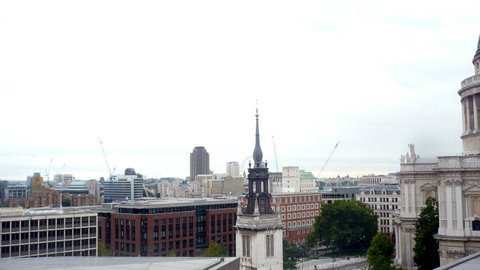
The ‘Wow’ factor of standing on the rooftop garden of the new shopping centre of One New Change, level with the Dome of St Paul’s
Cathedral, concluded a wonderful day exploring the ‘Glory of Wren’ hugely enjoyed by 35 members. Our superb City of London Guides
were Tony Tucker and Karen Chester, who pointed out the steeples of the churches we’d visited as we enjoyed the spectacular views
across the City.
Our day started outside St Paul’s at 11am after coffee in the crypt cafe. We divided into two groups and during the following
five hours visited six of the best churches, seeing many others along the way. Tony gave us all a laminated map, copied from his
excellent book ‘The Visitor’s Guide to the City of London Churches.’
We walked through Paternoster Square admiring Sir Christopher Wren’s original gateway of 1672, Temple Bar, which had been
incorporated into the square’s reconstruction after languishing in Theobalds Park, Hertfordshire since its removal from Fleet Street
in 1888 to make way for traffic.
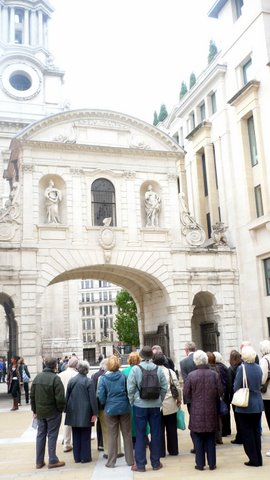
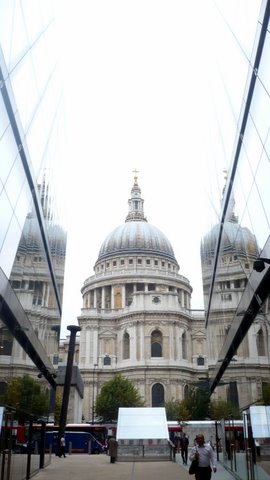
The splendid spires of nearby churches were reflected in the adjacent glass-walled modern buildings. St Vedast-alias- Foster’s
steeple is notable for its pierced windows in solid Portland stone with concave, convex, concave stages topped by an obelisk spire. We
visited the delightful paved garden, Fountain Court, hidden away on the north side with a fine Jacob Epstein stone relief. Christ
Church’s interior was destroyed by bombing in WW2 but its celebrated steeple was restored in 1960.
Tony pointed out an old shop with original interior iron staircase next to a listed plane tree which featured in one of Wordsworth’s
poems. We walked past the Cross Keys Inn linked to Dickens and heard the bells of St Mary-le-Bow as we arrived for lunch in the 11th
century crypt restaurant of one of the first churches to be re-built after the Fire of London.
St Mary-le-Bow’s square tower and balustrade, topped with twelve elegant columns and second cluster of pillars is capped by a golden
ball and vane, a magnificent nine feet long copper dragon. The ‘great bell of Bow’ rang the curfew at 9pm each evening from 1469 until
the practice was discontinued in 1876. We are all familiar with the ‘Oranges and Lemons’ nursery rhyme in which it features.
After lunch, we gathered in the courtyard garden by the impressive statue of Captain John Smith, leader of the first British overseas
settlement, established in Jamestown, Virginia in 1607. In the afternoon, we heard about the Leatherworkers area represented by the
Cordwainers' modern sculpture and had the privilege of seeing the courtyard of Skinners' Hall, very rarely open to the public.
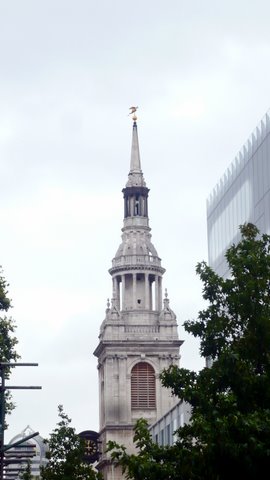
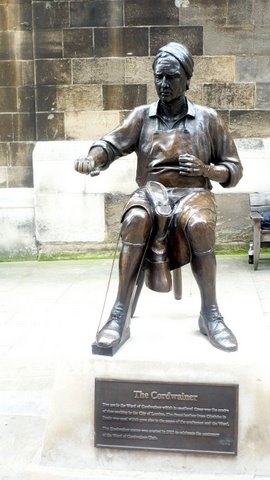
The unusual opportunity to view St Stephen Walbrook’s exterior was afforded by a demolition site close to the Roman Temple of Mithras excavations. The
perfectly proportioned interior was flooded with light and the copper-clad dome, slender Corinthian columns, outstanding wood carvings
were all breathtaking. The rector, Chad Varah founded the Samaritans here in 1953 and Henry Moore’s Travertine irregular rounded altar was
placed below the dome in the late 80s.
St Michael-Paternoster-Royal, the church of Richard (Dick) Whittington, four times Lord Mayor of London, now the headquarters of
The Mission to Seafarers followed. The glorious modern stained glass windows by John Hayward depict the confrontation between good and
evil (however, Wren did not favour stained glass). One of the last of Wren’s City churches to be built and the last to be restored after the War, we admired the graceful, octagonal
steeple and the church’s picturesque setting.
St.James Garlickhythe, its interior the tallest of Wren's churches with clerestory windows, prominently displays the shell of St. James the
Apostle and was built close to the wharf where garlic was brought into the city. Some of us purchased CDs of music performed on the
magnificent Father Smith organ.
And finally to St. Mary Aldermary with one of the finest late 17th century Gothic towers in the country, to be stunned on
entering by the outstanding fan-vaulted plaster ceiling.
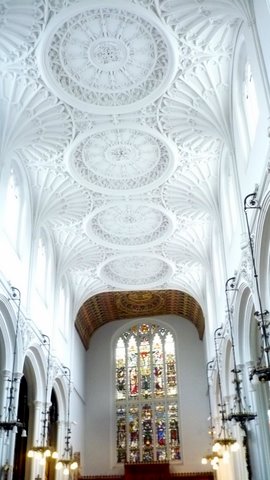
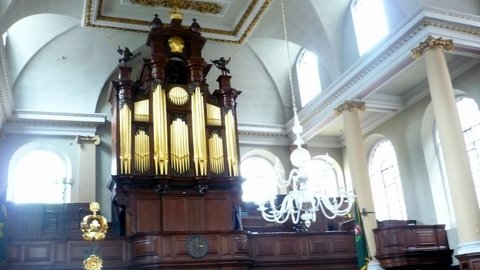
What a day!
Maureen Welsh September 2011
